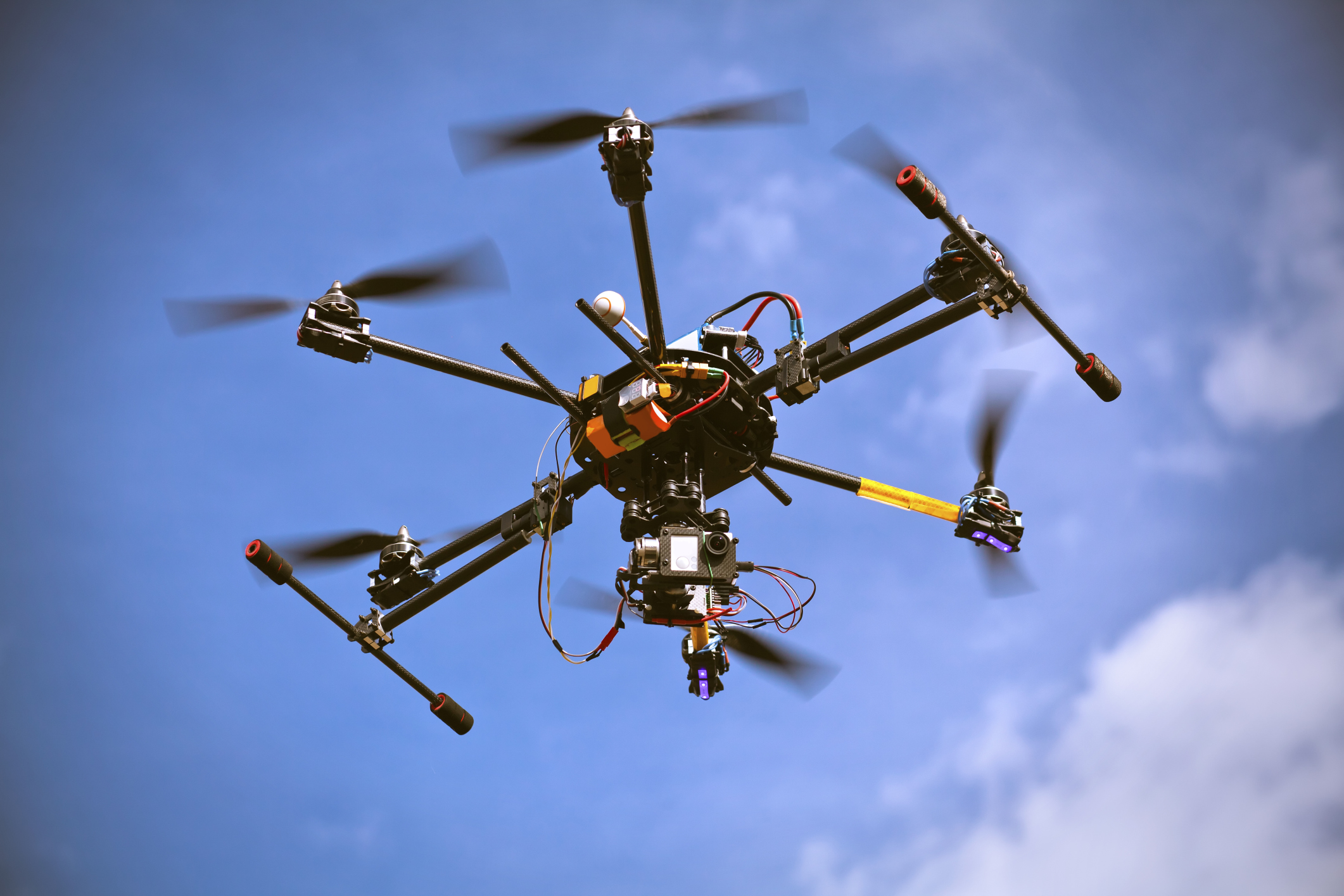How Drones, VR and BIM are Improving Construction Jobsite Safety
In addition to propelling Gray’s construction, engineering and architecture teams to new heights in design-build services, technology is also driving the company’s stringent safety program. With a goal of achieving zero incidents on each jobsite, it’s paramount that every precaution, from both behind the scenes and on the job, be taken throughout the lifecycle of a project. Technologies such as Building Information Modeling (BIM), Virtual Reality (VR) and Unmanned Aerial Vehicles (UAVs) are helping Gray’s safety team mitigate potential safety risks often before construction teams have even broken ground.

Below are a few technologies that are quickly unfolding in the construction industry, and how they can be utilized to improve jobsite safety.
BIM allows Gray to access preconstruction risks before things go wrong.
Construction, engineering, architecture and site teams use BIM to evaluate projects and identify potential safety risks before and during construction. The following BIM processes can help to minimize risk:
- Prefabrication – According to the “Safety Management in the Construction Industry SmartMarket Report,” firms using prefabrication, or modular construction, report increased levels of safety. Prefabrication promotes increased safety due to decreased man-hours, controlled work conditions and reduced hazardous elements. Prefabrication also encourages contractor involvement in projects before construction begins, which is a key aspect of improving safety. Because BIM facilitates digital fabrication, companies are able to increase productivity and minimize the risk of costly mistakes. Time saved on a project directly translates to a lower risk of safety incidents.
- Project Hazard Review –Team members use BIM to check for potential safety hazards. Through planning across crucial areas such as location and separation distance, egress requirements, critical lift distances, material storage locations and worker conditions, Gray is able to better understand potential risks that may exist within projects.

- Site Coordination and Logistics – Before a design is completed, BIM is used to coordinate all building systems and components. This promotes reduced downtime, increased efficiency and reduced rework, which ultimately lead to risk reduction. By utilizing BIM for scheduling and sequencing, site logistics plans are also created. Showing logistics such as erection sequences, construction activities, crane locations, storage and laydown areas and perimeter security such as fencing, these plans can pinpoint project congestion and potential onsite hazards.
- 3D Visualization – Visualization is a core activity in the BIM landscape, particularly when applied to safety standards. For example, 3D visualization can be utilized to check crane reach and capability, in addition to examining the risks in case of load fall; or to access what the crane jib could hit. This technology also aids in bridging the communication gap, eliminating language barriers that could lead to potential miscommunications. Other visualization technologies such as 3D architectural renderings, allow teams to make informed decisions without taking the risk of being onsite.
VR provides immersive training experiences where employees can visualize complex workplace situations and learn the appropriate responses first-hand through artificial intelligence.
Gray utilizes VR through Oculus Rift DK2 goggles to provide a full emersion VR experience for safety demonstrations, allowing users to be swept out of their own imaginations and into a precision 3D learning environment.

Drones provide jobsite monitoring with minimal human risk
UAVs, or drones, are now being used widely across almost every industry, so it’s no surprise that they are also affecting construction jobsites. Drones are being used to scope out sites and identify structural problems that would be difficult to predict without a high resolution aerial view. Capable of monitoring sites through aerial mapping, drones can minimize the need to for putting construction workers in cages and harnesses, ultimately reducing safety hazards.
During a drone jobsite fly-over, two-way, real-time communication can occur anywhere on the site through live video or radio connection between workers in the field and the safety manager using the drone as a video phone. According to Georgia Tech’s Usability Assessment, being able to move around a job site quickly using a drone can improve a safety manager’s efficiency by an estimated 50 percent.

While drones are capable of providing real-time hazard inspection, it’s equally important that any company utilizing this technology be aware of and adhere to all federal regulations. Though drones are currently being utilized at some of Gray’s jobsites, the role of the devices in the company’s safety program is still being outlined.
These technologies present enormous opportunity for improved safety on construction jobsites. Whether in the field or from the office, advancements in technology are revolutionizing the way projects are designed, coordinated and accessed for potential hazards.
Safety Manager Bill Carey, Senior Design Manager Ron Jackson, BIM Manager Robert Lownes and Architectural Technician II Brendan Corcoran of Gray will be discussing how these technologies are being utilized to promote safety at the 2015 Governor’s Safety and Health Conference and Exposition on Thursday, May 7 from 1:30-3 p.m. at the Galt House in Louisville. The presentation will also feature a live demonstration with Oculus Rift DK2 goggles, providing attendees with an interactive learning opportunity.
- Category:
- Industry
- Manufacturing
Some opinions expressed in this article may be those of a contributing author and not necessarily Gray.
Related News & Insights
Gray Construction Recognized for Putting Safety & Quality of Life First
Corporate News
July 02, 2014ABC of Alabama Honors Gray with Diamond STEP Safety Award
Industry
April 20, 2015Gray Receives Highest Safety Designation through AGC of Kentucky’s PROTECT Program
Industry
April 24, 2015